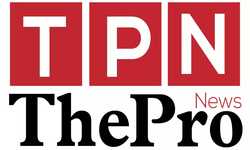Education
Literary Devices/ Poetic Devices / Writing Techniques
Poetry is a form of literary expression characterized by rhythm, meter, and often heightened language. It uses various literary devices to evoke emotions, create imagery, and convey meaning.
Poetic Devices:
- Metaphor: Comparing two unlike things without using “like” or “as.”
Example: “Her voice is music to his ears.” - Simile: Comparing two unlike things using “like” or “as.”
Example: “Her eyes sparkle like diamonds in the sun.” - Personification: Giving human qualities to non-human entities.
Example: “The trees danced in the wind.” - Alliteration: Repetition of initial consonant sounds in neighboring words.
Example: “Peter Piper picked a peck of pickled peppers.” - Assonance: Repetition of vowel sounds within nearby words.
Example: “The rain in Spain falls mainly on the plain.” - Consonance: Repetition of consonant sounds within nearby words.
Example: “The light in his heart burned bright all night.” - Imagery: Descriptive language that appeals to the senses.
Example: “The aroma of freshly baked bread filled the kitchen.” - Symbolism: Using symbols to represent ideas or concepts.
Example: “The dove symbolizes peace.” - Hyperbole: Exaggerated statements or claims not meant to be taken literally.
Example: “I’ve told you a million times.” - Onomatopoeia: Words that imitate the sound they describe.
Example: “The bees buzzed around the flowers.” - Rhyme: Repetition of similar sounds, usually at the end of lines.
Example: “I wandered lonely as a cloud
That floats on high o’er vales and hills,
When all at once I saw a crowd,
A host, of golden daffodils.” - Meter: Rhythmical pattern of stressed and unstressed syllables.
Example: “Shall I compare thee to a summer’s day?” (Sonnet 18 by Shakespeare) - Repetition: Repeated use of words, phrases, or lines for emphasis.
Example: “I have a dream” (Martin Luther King Jr.) - Irony: A literary technique where the intended meaning is different from the literal meaning.
Example: “The fire station burned down.” - Satire: Using humor, irony, or ridicule to criticize human folly or vices.
Example: “A Modest Proposal” by Jonathan Swift. - Catharsis: Emotional release experienced by the audience through intense emotions or experiences depicted in the work.
Example: Tragic downfall of the protagonist in “Hamlet” by Shakespeare. - Oxymoron: Combination of contradictory or incongruous words for effect.
Example: “Jumbo shrimp.” - Euphemism: Substituting mild or indirect words for harsh or unpleasant ones.
Example: “Passed away.” - Paradox: Statement or situation that appears self-contradictory but may reveal a deeper truth.
Example: “Less is more.” - Synecdoche: Using a part to represent the whole or vice versa.
Example: Referring to a car as “wheels.” - Juxtaposition: Placing contrasting ideas, characters, or settings side by side for comparison.
Example: Contrasting London and Paris in “A Tale of Two Cities” by Charles Dickens.
